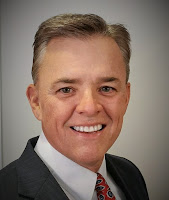Throughout my years of gaining business experience and education, it has been proven that you get the most return on investment through internal marketing. So, here are four ways to boost your internal marketing efforts:
- Send informative emails. Most of us are using some form of computerized patient relationship-management system to aid with scheduling. All of these services offer a library of fact sheet templates with information in areas such as Invisalign®, VELscope®, the importance of hygiene and so on. You can send informative emails to your patients to promote specific procedures you want to do more of or products you are trying to sell. If you are creative, you can customize your own emails. Regardless, these emails can establish you as an expert among your patients, who may forward them to a friend. Be careful not to inundate your patients with too many emails, though.
- Ask for team support. Ask your team to approach patients for referrals. If you have a supportive and cohesive team, this will be easy because your team members know which patients are the best ones to approach. There are so many opportunities during each appointment to do this. For example, let’s say patient “John” just got married, and he is in for a routine hygiene visit. In this scenario, anyone in your practice can ask, “So, John, when are we going to meet your wife?” However, when these moments arise, they need to feel natural.
- Provide rewards or gifts for referring. Anytime a person refers a patient to your practice, the referring patient must be thanked. We have done this in many ways throughout the years, and each time, patients are so often surprised and grateful to be recognized. It also indirectly incentivizes them to refer more patients to us.
- Smartly display print advertisements in the office. I am not a fan of placing posters and display ads promoting random dental products throughout the office. What I have found to be effective is having a dedicated space to let patients know what is new in our office or whatever it is that we want to be promoting. This creates a focus toward what we want to highlight, rather than a “store” full of generic advertisements that people are likely desensitized to.
We all know that the best referral source is our own patients. We know that if a potential patient calls us who has been sent to us from an existing patient, it’s almost guaranteed that he or she will make an appointment. This same patient will come to us with a built-in trust that will make treatment acceptance much easier to attain. So considering external marketing can be unpredictable and extremely costly, why not invest most of your marketing strategy into internal marketing?

Pamela Marzban, DDS, FAGD

Pamela Marzban, DDS, FAGD


